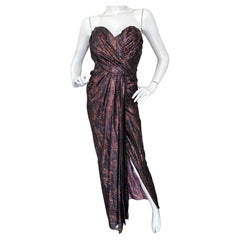Nolan Miller On Sale
Recent Sales
1970s American Day Dresses
1980s American Blazers
Nolan Miller On Sale For Sale on 1stDibs
How Much is a Nolan Miller On Sale?
Finding the Right Clothing for You
Start building your collection of covetable and iconic vintage clothing today — no matter where you roam, there is a curated selection of designer dresses and gowns, sweaters, shirts, dazzling shoes and more on 1stDibs that will keep you covered in the hottest styles from head to toe.
From elegant museum-worthy vintage Chanel dresses and jackets to audacious T-shirts and trousers from provocative punk designer Vivienne Westwood, one thing is abundantly clear: If the clothing for sale on 1stDibs could talk, it would certainly make a statement.
For fashion lovers, the 1990s have become associated with styles adopted by today’s supermodels and influencers — think John Galliano and Roberto Cavalli — but maybe ‘80s accessories are among your (guilty?) pleasures.
Playful, boldly colored coats and outerwear from Moschino, Ralph Lauren and other titans of the era can take a simpler ensemble to the next level, while chic and practical suits from the likes of Christian Dior and Balmain endure for haute couture advocates and beyond.
And vintage is the name of the game on today’s red carpets, too. Celebrity stylists are turning to archival pieces created by the likes of Bob Mackie, Thierry Mugler and Jean-Paul Gaultier as alternatives to new gowns plucked straight off the runway. Wearing such sought-after items gives celebrities instant allure and suggests a personal style that’s not only achingly glamorous but intellectually informed and influenced by a love of craftsmanship.
Those seeking contemporary luxury looks and in-demand street-style fits can indulge in designs by Bottega Veneta, Miu Miu and Loro Piana, while pieces from Gucci, Yves Saint Laurent and Versace endure as examples of fashion’s most covetable goods.
The future — and glamorous past — of fashion is yours for the wearing. Find vintage clothing and accessories for sale on 1stDibs, including designs by Balenciaga, Valentino, Celine, Loewe and more.

